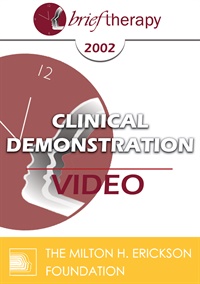
Credit available - Click Here for more information
- Average Rating:
- Not yet rated
- Topic Areas:
- Hypnosis | Advanced Techniques of Hypnosis & Therapy | Continuing Education | Ericksonian Hypnosis and Therapy Techniques | Hypnotherapy | Milton Erickson | Communication | Metaphors
- Categories:
- Advanced Techniques of Hypnosis & Therapy | Featured | Training Videos | Online Continuing Education | Milton H. Erickson Collections
- Faculty:
- Jeffrey Zeig, PhD | Milton H. Erickson, MD
- Course Levels:
- Master Degree or Higher in Health-Related Field
- Duration:
- 02:38:00
- Format:
- Audio and Video
- Original Program Date:
- Dec 31, 1977
- Short Description:
- This training tool contains segments of hypnotherapy conducted by Erickson, with the same subject, on two consecutive days in 1978. Erickson demonstrates how symbols may be used as metaphoric forms of communication to foster new ideas and understandings. Zeig discusses Erickson’s technique.
- Price:
- $75.00 - Base Price

Credit available - Click Here for more information
- Average Rating:
- Not yet rated
- Topic Areas:
- Hypnosis | Hypnotic Induction | Advanced Techniques of Hypnosis & Therapy | Continuing Education | Ericksonian Hypnosis and Therapy Techniques | Milton Erickson
- Categories:
- Advanced Techniques of Hypnosis & Therapy | Featured | Training Videos | Online Continuing Education | Milton H. Erickson Collections
- Faculty:
- Milton H. Erickson, MD | Jeffrey Zeig, PhD
- Course Levels:
- Master Degree or Higher in Health-Related Field
- Duration:
- 01:54:00
- Format:
- Audio and Video
- Original Program Date:
- Dec 31, 1963
- Short Description:
- The Process of Hypnotic Induction features Erickson in 1964, working with several different subjects. He demonstrates how to individualize the method of induction to fit the unique characteristics of the individual. Jeffrey Zeig discusses the microdynamics of technique that Erickson used in his 1964 inductions. Comments are aimed at clinicians experienced in hypnosis looking to refine their skills.
- Price:
- $75.00 - Base Price
- Average Rating:
- Not yet rated
- Topic Areas:
- Hypnosis | Advanced Techniques of Hypnosis & Therapy | Ericksonian Hypnosis and Therapy Techniques | Marriage | Milton Erickson | Seeding | Utilization
- Categories:
- Advanced Techniques of Hypnosis & Therapy | Training | Milton H. Erickson Collections | World Languages | German
- Faculty:
- Milton H. Erickson, MD | Jeffrey Zeig, PhD
- Course Levels:
- Master Degree or Higher in Health-Related Field
- Duration:
- 2 Hours 24 Min
- Format:
- Audio and Video
- Original Program Date:
- Dec 31, 1977
- Short Description:
- This hypnotherapeutic session took place in 1978, and decades later, it’s just as powerful and engaging. Enhancing the viewer’s learning experience is Dr. Zeig’s discussion of the underlying elements of Erickson’s methods: the ARE model of instruction; the art of parallel communication; targeted utilization; and the use of implication. Erickson’s fluid repertoire, drawn from systematic thinking, includes the use of anecdotes, symbolic communication, and strategic seeding. The elicitation of solutions, based on promoting constructive associations and flexible thoughts and feelings, is an area of particular interest and one in which Erickson was especially elegant.
- Price:
- $65.00 - Base Price

- Average Rating:
- Not yet rated
- Topic Areas:
- Advanced Techniques of Hypnosis & Therapy | Ericksonian Hypnosis and Therapy Techniques | Hypnosis | Milton Erickson | Psychotherapy | Resistance
- Bundle(s):
- Spanish Erickson Video Bundle
- Categories:
- Spanish | Advanced Techniques of Hypnosis & Therapy | Milton H. Erickson Collections | World Languages
- Faculty:
- Milton H. Erickson, MD | Jeffrey Zeig, PhD
- Course Levels:
- Master Degree or Higher in Health-Related Field
- Duration:
- 1 Hour 55 Minutes
- Format:
- Audio and Video
- Original Program Date:
- Dec 31, 1978
- Short Description:
- El Dr. Zeig introduce original de 1979 metraje y revela patrones del Dr. Erickson con entendimientos limpiados de discusión con el propio Dr. Erickson
- Price:
- $75.00 - Base Price
Credit available - Click Here for more information
- Average Rating:
- Not yet rated
- Topic Areas:
- Hypnosis | Psychotherapy | Advanced Techniques of Hypnosis & Therapy | Continuing Education | Resistance | Ericksonian Hypnosis and Therapy Techniques | Milton Erickson | Confusion Technique | Naturalistic | Seeding | Hypnotherapy
- Categories:
- Advanced Techniques of Hypnosis & Therapy | Featured | Training Videos | Online Continuing Education | Milton H. Erickson Collections
- Faculty:
- Milton H. Erickson, MD | Jeffrey Zeig, PhD
- Course Levels:
- Master Degree or Higher in Health-Related Field
- Duration:
- 1 Hour 55 Min
- Format:
- Audio and Video
- Original Program Date:
- Dec 31, 1978
- Short Description:
- In 1979, Milton Erickson and Jeffrey Zeig spent five hours reviewing a demonstration that Erickson conducted at a teaching seminar. That demonstration is now available as a training video for Ericksonian practitioners. Erickson’s experiential methods include the symbolic use of hypnotic phenomena, encouraging resistance, naturalistic confusion technique, seeding, and using isomorphic anecdotes. Jeffrey Zeig discusses the mechanics of Erickson’s unique approach to psychotherapy. Working with Resistance provides an opportunity to watch a master hypnotherapist demonstrate his technique.
- Price:
- $75.00 - Base Price

- Average Rating:
- Not yet rated
- Topic Areas:
- Utilization | Clinical Demonstrations | Psychotherapy | Therapist Development | Anxiety | Ericksonian Hypnosis and Therapy Techniques | Religion | Art of Psychotherapy
- Bundle(s):
- Art of Psychotherapy - Utilization Series
- Categories:
- Art of Psychotherapy
- Faculty:
- Jeffrey Zeig, PhD
- Course Levels:
- Master Degree or Higher in Health-Related Field
- Duration:
- 2 Hours 22 Minutes
- Format:
- Audio and Video
- Original Program Date:
- Jun 21, 2020
- Short Description:
- In our first session, our demonstration subject has recently made a major life change. They have decided to change their career from being a priest, into becoming a therapist. Big life changes like these often induce anxiety in patients, and in this clinical demonstration we see Dr. Jeffrey Zeig exhibit a number of Ericksonian techniques to help the client be in harmony with themselves. Dr. Zeig utilizes some of Ginny’s religious history to help guide her towards transformation.
- Price:
- $79.00 - Base Price
- Average Rating:
- Not yet rated
- Topic Areas:
- Clinical Demonstrations | Ericksonian Hypnosis and Therapy Techniques | Therapist Development | Treatment Planning
- Categories:
- Brief Therapy Conference | Brief Therapy Conference 2002
- Faculty:
- Jeffrey Zeig, PhD
- Course Levels:
- Master Degree or Higher in Health-Related Field
- Duration:
- 47:12
- Format:
- Audio and Video
- Original Program Date:
- Dec 13, 2002
- Short Description:
- Educational Objectives: 1) To describe how to conceptualize challenging patients in a cognitive framework. 2) To describe how to use a cognitive conceptualization to plan more effective treatment.
- Price:
-
Sale is $29.00
price reduced from Base Price - $59.00
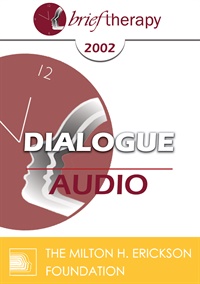
- Average Rating:
- Not yet rated
- Topic Areas:
- Dialogues | Utilization | Brief Therapy | Ericksonian Hypnosis and Therapy Techniques
- Categories:
- Brief Therapy Conference | Brief Therapy Conference 2002
- Faculty:
- Steve De Shazer, MSSW | Betty Alice Erickson, MS, LPC, LMFT
- Duration:
- 58:56
- Format:
- Audio Only
- Original Program Date:
- Dec 13, 2002
- Short Description:
- BT02 Dialogue 04 - Utilization - Steve de Shazer, MSSW and Betty Alice Erickson, MS, LPC, LMFT
- Price:
- $15.00 - Base Price
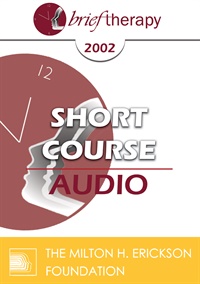
- Average Rating:
- Not yet rated
- Topic Areas:
- Short Courses | Brief Therapy | Ericksonian Hypnosis and Therapy Techniques | Solution Oriented Approach
- Categories:
- Brief Therapy Conference | Brief Therapy Conference 2002
- Faculty:
- Richard Landis, PhD
- Duration:
- 1:17:22
- Format:
- Audio Only
- Original Program Date:
- Dec 12, 2002
- Short Description:
- Erickson often saw the presenting symptom as the patient's solution to a problem that might not be immediately evident. By identifying the core problem that the patient was trying to solve with symptoms, Erickson was able to create appearingly simple solutions that produced lasting changes. This short course is the central element taken from our Congress presentation that teaches therapists how to view symptoms, in that Ericksonian mind set, to find brief but lasting solutions.
- Price:
- $15.00 - Base Price
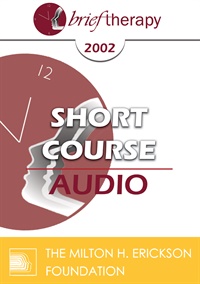
- Average Rating:
- Not yet rated
- Topic Areas:
- Short Courses | Addiction | Brief Therapy | Ericksonian Hypnosis and Therapy Techniques
- Categories:
- Brief Therapy Conference | Brief Therapy Conference 2002
- Faculty:
- Albina Tamalonis, PsyD
- Duration:
- 1:19:14
- Format:
- Audio Only
- Original Program Date:
- Dec 12, 2002
- Short Description:
- This course offers a practical step-by-step approach to overcoming vicious circles and addictions. The foundation of this comprehensive treatment is based on learning research and Ericksonian ideas. For example, what is learned can be unlearned and helping your patient target small changes eventually progresses into lasting change. An addiction effects all the areas of a patient's life; mental, emotional, physical, spiritual, behavioral and social. Six Ericksonian hypnotic protocols are given to help you help your patient create changes in these six areas.
- Price:
- $15.00 - Base Price
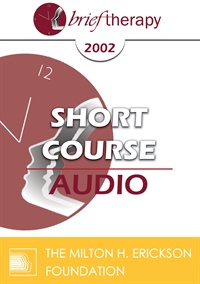
- Average Rating:
- Not yet rated
- Topic Areas:
- Short Courses | Children and Adolescent Therapy | Ericksonian Hypnosis and Therapy Techniques | Brief Therapy
- Categories:
- Brief Therapy Conference | Brief Therapy Conference 2002
- Faculty:
- Maria Escalante de Smith, MA
- Duration:
- 1:10:56
- Format:
- Audio Only
- Original Program Date:
- Dec 12, 2002
- Short Description:
- Adolescents go through very deep changes, and go through them more rapidly than their parents did. Many adolescents find that they cannot elaborate these changes. Finding a "safe place" where teens can talk about these processes in group therapy normalizes their feelings; eases tension and may help them regain their inner resources by using Ericksonian hypnosis. The oppositional defiant teenager may find ways to be helped solving their most common problems easily.
- Price:
- $15.00 - Base Price
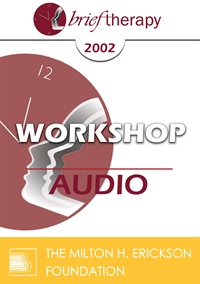
- Average Rating:
- Not yet rated
- Topic Areas:
- Workshops | Brief Therapy | Ericksonian Hypnosis and Therapy Techniques | Psychotherapy | Resources | Self-Relations
- Categories:
- Brief Therapy Conference | Brief Therapy Conference 2002
- Faculty:
- Stephen Gilligan, PhD
- Duration:
- 2:26:58
- Format:
- Audio Only
- Original Program Date:
- Dec 12, 2002
- Short Description:
- A key idea in Milton Erickson's work was that a person's problematic experiences and behaviors can be skillfully accepted and utilized as the basis for therapeutic change. Self-relations psychotherapy develops this idea further, emphasizing symptoms as indicating the death of an old identity and the impending birth of a new identity. In this workshop, we will see how a therapist can generate a ritual space where symptoms and other disturbing experiences can be "midwifed" into new identities.
- Price:
- $15.00 - Base Price
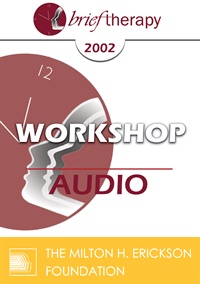
- Average Rating:
- Not yet rated
- Topic Areas:
- Workshops | Habits | Addiction | Brief Therapy | Ericksonian Hypnosis and Therapy Techniques | Tailoring
- Categories:
- Brief Therapy Conference | Brief Therapy Conference 2002
- Faculty:
- Jeffrey Zeig, PhD
- Duration:
- 2:31:23
- Format:
- Audio Only
- Original Program Date:
- Dec 14, 2002
- Short Description:
- A method will be presented for joining strategic assessment and intervention to create pattern disruption and elicit resources for change. Essentials of an Ericksonian method for tailoring approaches to habit control will be offered. Weight and smoking control will be emphasized.
- Price:
- $15.00 - Base Price
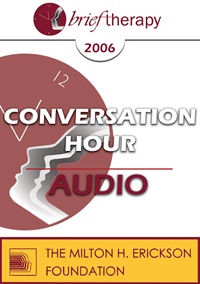
- Average Rating:
- Not yet rated
- Topic Areas:
- Conversation Hours | Communication | Brief Therapy | Ericksonian Hypnosis and Therapy Techniques
- Categories:
- Brief Therapy Conference | Brief Therapy Conference 2006
- Faculty:
- Betty Alice Erickson, MS, LPC, LMFT
- Duration:
- 1:01:53
- Format:
- Audio Only
- Original Program Date:
- Dec 08, 2006
- Short Description:
- BT06 Conversation Hour 03 - Effective Communication for Therapy - Betty Alice Erickson, MS, LPC, LMFT
- Price:
- $15.00 - Base Price
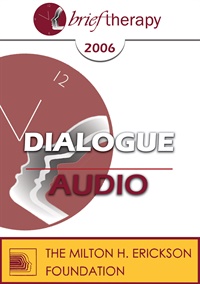
- Average Rating:
- Not yet rated
- Topic Areas:
- Dialogues | Metaphors | Brief Therapy | Ericksonian Hypnosis and Therapy Techniques
- Categories:
- Brief Therapy Conference | Brief Therapy Conference 2006
- Faculty:
- Jeffrey Kottler, PhD | Stephen Lankton, MSW
- Duration:
- 59:20
- Format:
- Audio Only
- Original Program Date:
- Dec 08, 2006
- Short Description:
- BT06 Dialog 02 - Metaphor - Jeffrey Kottler, PhD & Stephen Lankton, MSW, DAHB
- Price:
- $15.00 - Base Price

- Average Rating:
- Not yet rated
- Topic Areas:
- Short Courses | Supervision | Therapist Development | Ericksonian Hypnosis and Therapy Techniques | Brief Therapy
- Categories:
- Brief Therapy Conference | Brief Therapy Conference 2006
- Faculty:
- David Barnum | Marne Sherman, PhD
- Duration:
- 1:19:30
- Format:
- Audio Only
- Original Program Date:
- Dec 07, 2006
- Short Description:
- Supervisors often find themselves in the role of "supervisor" because they have been identified as good clinicians, but typically have little formal training in supervision. While clinical skills are essential, the application of those skills in supervision can be quite unique. This workshop will focus on the application of Ericksonian principles to the practice of supervision at various levels of clinical development. Practical and ethical aspects of supervision also will be discussed.
- Price:
- $15.00 - Base Price
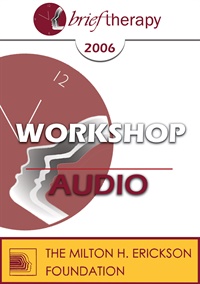
- Average Rating:
- Not yet rated
- Topic Areas:
- Workshops | Brief Therapy | Ericksonian Hypnosis and Therapy Techniques | Resources | Self-Relations | Utilization | Solution Oriented Approach
- Categories:
- Brief Therapy Conference | Brief Therapy Conference 2006
- Faculty:
- Stephen Gilligan, PhD
- Duration:
- 2:37:46
- Format:
- Audio Only
- Original Program Date:
- Dec 09, 2006
- Short Description:
- A key idea in Milton Erickson's work was that a person's problematic experiences and behaviors can be skillfully accepted and utilized as the basis for therapeutic change. Self-relations psychotherapy develops this idea further, emphasizing symptoms as indicating the death of an old identity and the impending birth of a new identity. Thus, we don't try to "get rid of" depression, anxiety, or "acting out/acting in" expressions, but instead invite them into a human relationship of "sponsorship", where their healing and helpful nature may be realized. We will see how a therapist can generate a ritual space where symptoms and other disturbing experiences can be "midwifed" into new identities.
- Price:
- $15.00 - Base Price
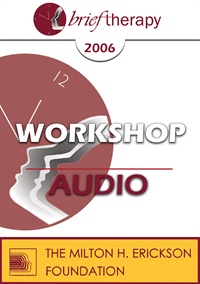
- Average Rating:
- Not yet rated
- Topic Areas:
- Workshops | Brief Therapy | Ericksonian Hypnosis and Therapy Techniques | Footprinting | Goals of the Therapist | Reframing | Utilization
- Categories:
- Brief Therapy Conference | Brief Therapy Conference 2006
- Faculty:
- Stephen Lankton, MSW
- Duration:
- 1:44:18
- Format:
- Audio Only
- Original Program Date:
- Dec 09, 2006
- Short Description:
- The Basic Foot Print is a process model of change in therapy that represents and identifies Erickson's method for change. It is a general umbrella under which we should be able to place any step of change or intervention. Encounters that follow the Basic Foot Print create change and any therapy that steps through these stages reflects Dr. Erickson's approach and echoes his legacy. The steps are: matching/connecting, blending, utilizing, introducing ambiguity (disrupting stasis), reframing and co-creating outcomes. An in-depth understanding of steps within the Basic Footprint will be taught, demonstrated and practiced.
- Price:
- $15.00 - Base Price
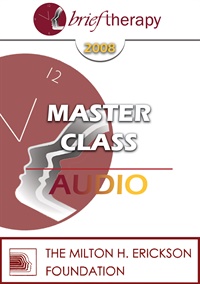
- Average Rating:
- Not yet rated
- Topic Areas:
- Master Classes | Brief Therapy | Experiential Therapy | Gestalt | Hypnosis | Ericksonian Hypnosis and Therapy Techniques
- Categories:
- Brief Therapy Conference | Brief Therapy Conference 2008
- Faculty:
- Jeffrey Zeig, PhD | Erving Polster, PhD
- Duration:
- 3:13:17
- Format:
- Audio Only
- Original Program Date:
- Dec 15, 2008
- Short Description:
- Gestalt therapy and Ericksonian hypnotherapy are experiential methods of change. In combination they can be synergistic. Psychotherapy is best when clients have a first hand experience of an alive therapeutic process. Such dynamic, empowering experiences pave the way for dynamic understandings. Drs. Polster and Zeig will offer brief introductions to their approaches. They will demonstrate their methods through live therapeutic sessions and they will engage with each other and the participants to examine commonalities and differences in their work.
- Price:
- $15.00 - Base Price
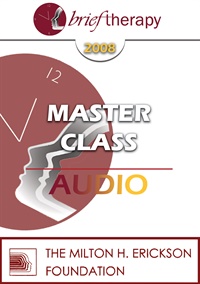
- Average Rating:
- Not yet rated
- Topic Areas:
- Master Classes | Brief Therapy | Experiential Therapy | Gestalt | Hypnosis | Ericksonian Hypnosis and Therapy Techniques | Hypnotherapy
- Categories:
- Brief Therapy Conference | Brief Therapy Conference 2008
- Faculty:
- Jeffrey Zeig, PhD | Erving Polster, PhD
- Duration:
- 2:31:17
- Format:
- Audio Only
- Original Program Date:
- Dec 15, 2008
- Short Description:
- Gestalt therapy and Ericksonian hypnotherapy are experiential methods of change. In combination they can be synergistic. Psychotherapy is best when clients have a first hand experience of an alive therapeutic process. Such dynamic, empowering experiences pave the way for dynamic understandings. Drs. Polster and Zeig will offer brief introductions to their approaches. They will demonstrate their methods through live therapeutic sessions and they will engage with each other and the participants to examine commonalities and differences in their work.
- Price:
- $15.00 - Base Price
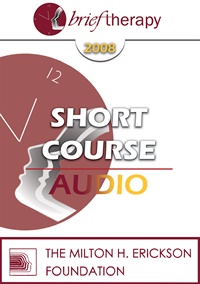
- Average Rating:
- Not yet rated
- Topic Areas:
- Short Courses | Brief Therapy | Communication | Ericksonian Hypnosis and Therapy Techniques | Hypnosis | Language of Hypnosis
- Categories:
- Brief Therapy Conference | Brief Therapy Conference 2008
- Faculty:
- Kate Cohen-Posey, MS
- Duration:
- 1:30:12
- Format:
- Audio Only
- Original Program Date:
- Dec 11, 2008
- Short Description:
- A person may say, "Don't ever . . . lie to me again!" or "You can . . . always tell me the truth." In either case, hypnotic language has been used to evoke undesirable or desirable behavior. This workshop will take Ericksonian linguistic patterns and export them into everyday environments. Exercises, role-plays, and brain storming will show how to make lasting changes in speech habits when addressing resistant family members and co-workers.
- Price:
- $15.00 - Base Price

- Average Rating:
- Not yet rated
- Topic Areas:
- Short Courses | Brief Therapy | Children and Adolescent Therapy | Cognitive Behavior Therapy (CBT) | Ericksonian Hypnosis and Therapy Techniques
- Categories:
- Brief Therapy Conference | Brief Therapy Conference 2008
- Faculty:
- Joseph Sestito, MSSA, LISW-S
- Duration:
- 1:28:27
- Format:
- Audio Only
- Original Program Date:
- Dec 11, 2008
- Short Description:
- In this workshop, you will learn about brief Ericksonian and CBT solutions for children, adolescents and the troubled child in you. I have pioneered these over the last decade during which I have done this type of therapy with children and adolescents on a full-time basis, and trained other clinicians working with this population. There are essentially two methods within each session that you conduct with your child or adolescent client which you will learn to do. These can bring back and begin to use immediately in your practice following this conference.
- Price:
- $15.00 - Base Price
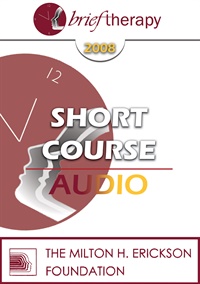
- Average Rating:
- Not yet rated
- Topic Areas:
- Short Courses | Ericksonian Hypnosis and Therapy Techniques | Supervision | Brief Therapy
- Categories:
- Brief Therapy Conference | Brief Therapy Conference 2008
- Faculty:
- Dale Bertram, PhD | Mike Rankin, LMFT
- Duration:
- 1:24:49
- Format:
- Audio Only
- Original Program Date:
- Dec 11, 2008
- Short Description:
- Competent supervision is necessary for producing skilled clinicians, for resolving difficult situations in the supervisory relationship, and in helping clinicians resolve difficult situations with clients. Several key vignettes will be addressed that involve scenarios that challenge the supervisor-supervisee relationship, create opportunities for building supervisee's clinical competence, and/or involve stuck cases that need to be resolved.
- Price:
- $15.00 - Base Price
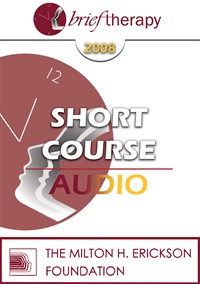
- Average Rating:
- Not yet rated
- Topic Areas:
- Short Courses | Children and Adolescent Therapy | Ericksonian Psychotherapy | Divorce | Psychotherapy | Ericksonian Hypnosis and Therapy Techniques
- Categories:
- Brief Therapy Conference | Brief Therapy Conference 2008
- Faculty:
- Maria Escalante de Smith, MA
- Duration:
- 1:25:05
- Format:
- Audio Only
- Original Program Date:
- Dec 11, 2008
- Short Description:
- Ericksonian psychotherapy emphasizes the utilization of people's resources. When working with children of divorced parents, I focus on strengths and keep in mind the Ericksonian interventions should be brief because children may get tired of being in therapy for a long time. In a case with two children, techniques including the use of toys will be discussed. How to make several brief interventions quickly while utilizing "toy co-therapists" in home assignments, and the combination of conversational trance with tasks will be emphasized. There also will be references to the importance of working with the family system.
- Price:
- $15.00 - Base Price

- Average Rating:
- Not yet rated
- Topic Areas:
- Short Courses | Habits | Addiction | Ericksonian Hypnosis and Therapy Techniques | Brief Therapy
- Categories:
- Brief Therapy Conference | Brief Therapy Conference 2008
- Faculty:
- Joseph Dowling, MS, LPC
- Duration:
- 1:31:47
- Format:
- Audio Only
- Original Program Date:
- Dec 11, 2008
- Short Description:
- This short course will emphasize a four session smoking cessation model that will provide attendees with an Ericksonian template to be utilized in the treatment of smoking, weight loss, nail-biting, obsessive thinking, compulsive behavior and addictive behavior. An Ericksonian template for habit control can be formulated to the unique symptomology and strengths of each individual client. There will be a detailed discussion of the four session smoking cessation model with case studies, experiential exercises and a live demonstration.
- Price:
- $15.00 - Base Price




